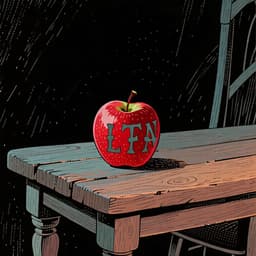Ana tiene una banana.
A-na TIE-ne U-na ba-NA-na
Ana has a banana.
🔊 Listen & Practice
Start with slow speed to master pronunciation, then gradually increase to challenge yourself.
🎨 Visualization

Ana and her banana! Can you say it smoothly?
🎯 Pronunciation Focus
The Pure 'a' Vowel
/a/Unlike the English 'a' in 'cat' or 'cake', the Spanish 'a' is a short, open sound, like the 'a' in 'father'. Your jaw should be relaxed and your mouth open. Practice the consistent 'ah' sound in 'Ana', 'una', and 'banana'.
Linking Vowel Sounds (Liaison)
/a.a/Notice how 'una' and 'banana' flow together. When a word ends in a vowel and the next word starts with the same vowel, they blend into one smooth, slightly longer sound. Instead of 'una... banana', it sounds more like 'unabanana'. This is key to sounding natural.
📝 Practice Breakdown
Start here. Make sure your 'a' sounds are short and open, like 'ah'. 'A-na'. The 'e' in 'tiene' is like the 'e' in 'pet'.
This is all about the 'a' sound! 'u-na ba-na-na'. Try to make every 'a' sound exactly the same.
Now, link them! Say 'una banana' so it flows together like one word: 'unabanana'. This linking is what makes Spanish sound so smooth.
Key Words in This Tongue Twister:
📚 Background
This is a very simple and common practice phrase for beginners, especially children. It's not a traditional 'trabalenguas' in the sense of being tricky, but its repetitive vowel sounds make it a perfect first step for mastering Spanish vowels and rhythm.
❌ Common Pitfalls
Pronouncing 'a' like in 'apple'
Mistake: "Saying the 'a' sound with the flat English 'a' from 'cat' or the long 'a' from 'cake'."
Correction: Open your mouth and say 'ah,' like when a doctor checks your throat. That's the Spanish 'a'! It's always short, open, and consistent in 'Ana,' 'una,' and 'banana'.
Choppy Phrasing
Mistake: "Putting a hard stop between words, like 'Ana... tiene... una... banana'."
Correction: Spanish words flow into each other. Focus on connecting 'tiene' and 'una', and especially 'una' and 'banana'. Aim for a smooth, connected rhythm.
🌎 Where It's Used
General Spanish
This simple phrase is understood everywhere. While the word for 'banana' can vary ('plátano' in Spain and other regions, 'banano' in Colombia), 'banana' is widely understood and perfect for this exercise.
🔗 Related Tongue Twisters
The Banana Smoothie Challenge
Say 'Ana tiene una banana' five times in a row. The goal isn't speed, but smoothness. Try to make it sound like one continuous, rhythmic phrase.
🏷️ Tags
Frequently Asked Questions
Why is it so important to get the vowels right in Spanish?
Spanish has only five pure vowel sounds, and they are the heart of the language's rhythm. Mastering them is the fastest way to sound clearer and more natural. A phrase like this is perfect muscle memory training for your mouth.
Is 'banana' the only word for banana in Spanish?
No, it's a great example of regional variation! You'll also hear 'plátano' (especially in Spain, Mexico), 'banano' (Colombia), 'guineo' (Caribbean), and others. But 'banana' is understood almost everywhere.

